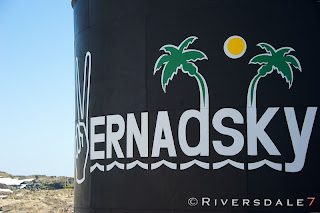A full load of passengers on board Fram is about
230 people. Right now we have 145 guests and Fram is quiet. Peaceful. When you add a rough ride on the Drake,
there are even fewer people up and about.
If you have your sea legs it is a very relaxing time.
It can be mesmerizing to watch the breaking seas
and giant Wandering Albatross soaring about. On the other hand, if you forgot to take your motion
sickness meds and you’re prone to sea sickness, then weather like we are having
today is not such a tranquil experience.
“Hoo-ray and up she rises, hoo-ray and up she rises...” can have different connotations.
The truth is that Fram is a very stable ship and
while we had seas of four to five metres all day long, it is not a big deal on
Fram. Still, the gym sat empty,
the Jacuzzis were drained, waffles were postponed until tomorrow, the seated
dinner became a buffet, bridge visits were postponed from morning until
afternoon, the elevators decommissioned and access to the outdoors was limited
to deck seven.
Nevertheless, as always on sea days, the lecture series continued at full
throttle with talks scheduled on: Shackleton, The Geology of Antarctica,
Albatross and Petrels, and The History of Whaling.
At 17:00 everyone was invited to join the
Expedition Team in the Observation Lounge for a recap of the voyage. The whole team lined up across the
dance floor and responded to questions ranging from global warming, to landing
procedures, to the stability of Fram in high seas!
As
we cruise steadily northwards the winds and the seas have noticeable
decreased. Now the seas are a
comfortable three to four metres.
The forecast for tomorrow?
More of the same!








































.jpg)
.jpg)
.jpg)
.jpg)
.jpg)





